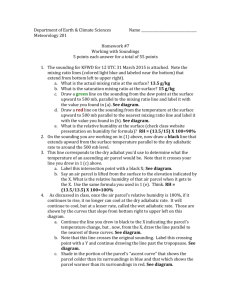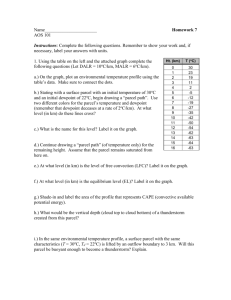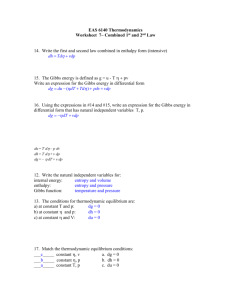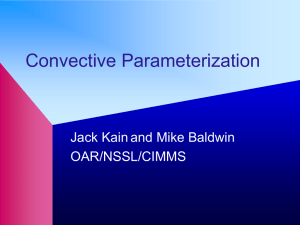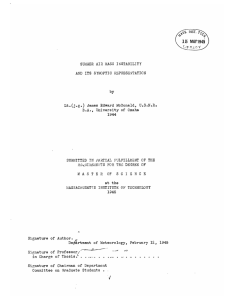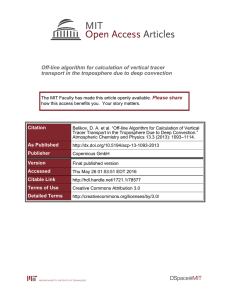CAPE, the Cap, and Shear: the science of storm
advertisement
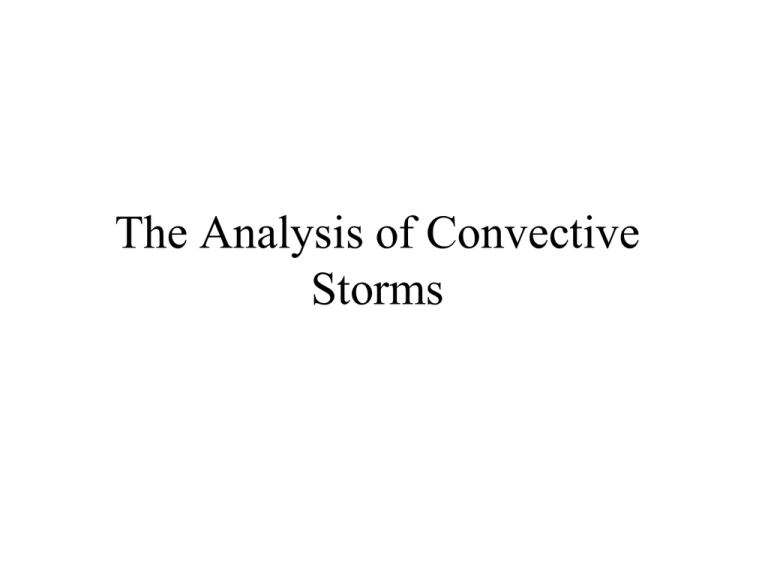
The Analysis of Convective Storms Thermodynamic Diagrams There are three desirable characteristics of atmospheric thermodynamic diagrams: • The area enclosed by any cyclic process should be proportional to energy or work. • The more straight lines the better. • The angle between isotherms and dry adiabats should be as large as possible. • Emagram—Abscissa is T, ordinate is proportional to ln p. (From energy/mass). • Tephigram—Abscissa is T, ordinate is logarithm of potential temperature, sometimes diagram is rotated (From T-phi) R/c • Stuve—Abscissa is T, ordinate is p Area is not proportional to energy. • Skew T-ln p—Similar to emagram, but temperature lines are skewed to increase the angle with dry adiabats. p Convection Parameters • Lifted Condensation Level (LCL) – level at which a parcel lifted from the surface will saturate • Convective Condensation Level (CCL) – level at which a parcel from the surface heating to its convective temperature will saturate • Convective Temperature – the temperature that the surface layer would need to be heated to to convect Convection Parameters (cont.) • Level of Free Convection (LFC) – level at which a lifted parcel becomes warmer than its surroundings, and hence buoyant. • Equilibrium Level (EL) – level at which a previously buoyant parcel’s temperature again equals the environmental temperature. This is an approximate height for thunderstorm anvils. Convection Parameter (cont.) • Convective Inhibition (CIN) – the “negative” energy area below a parcel’s level of free convection. • Convective Available Potential Energy (CAPE) – The “positive” energy area where a parcel is accelerating upward. • Downdraft Convective Available Potential Energy (DCAPE) – The negative energy area where a parcel can be accelerated downward evaporative cooling. pf CAPE Rd ( T T ) d (ln( p )) p e pi Vmax 2CAPE 3 DMaxHail 3 10 CAPE Vdown 2 DCAPE Stability Parameters All indices are useful diagnostics but should not be used blindly • Lifted index (LI) • Showalter index (SI) • Total totals (TT) • Severe Weather Threat Index (SWEAT) • Bulk Richardson Number • Storm Relative Helicity Miller Type I “loaded gun sounding” Firing gun sounding? Miller Type IV “Inverted V sounding Miller Type II (tropical sounding) Miller Type III Sounding Thunderstorm Types • Single cell (pulse)—can be strong, but no severe • Multicell—can be severe, but don’t generate strong tornadoes • Supercell—rotating updraft, most severe storms Single Cell Thunderstorm Multicell Thunderstorm Supercell Thunderstorm Conversion of Horizontal Vorticity to Vertical Vorticity Storm Splitting Tornado probability from Storm Prediction Center Early afternoon satellite photo Late afternoon satellite photo
